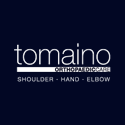Historically, surgical treatment has been used if rest and a cortisone injection does not help. If unsuccessful, a small sliver of ulna bone is removed so that the length of the ulna at the wrist can be shortened. This decreases force transmission across the ulna, and helps to decrease pain and improve stability. A plate is used to stabilize the bone until it heals, but 50% of the time, it needs to be removed. Further, the bone cut fails to heal 5-10% of the time.
I have had a significant interest over the past decade in applying arthroscopic techniques to treat ulnar wrist pain. I have published numerous articles and delivered many lectures both nationally and internationally on the subject of Arthroscopic wafer distal ulna resection as treatment for Ulnar Impaction Syndrome/Ulnar Wrist Pain.
Results are very satisfactory in 95% of patients. Recovery is quicker--within 6 weeks--and the vast majority of my patients have returned to normal activity including golf and tennis. Over the past 5 years I have performed over 100 such procedures, and recommend such an arthroscopic approach to treat ulnar wrist as opposed to open, nonarthroscopic surgical alternatives.



